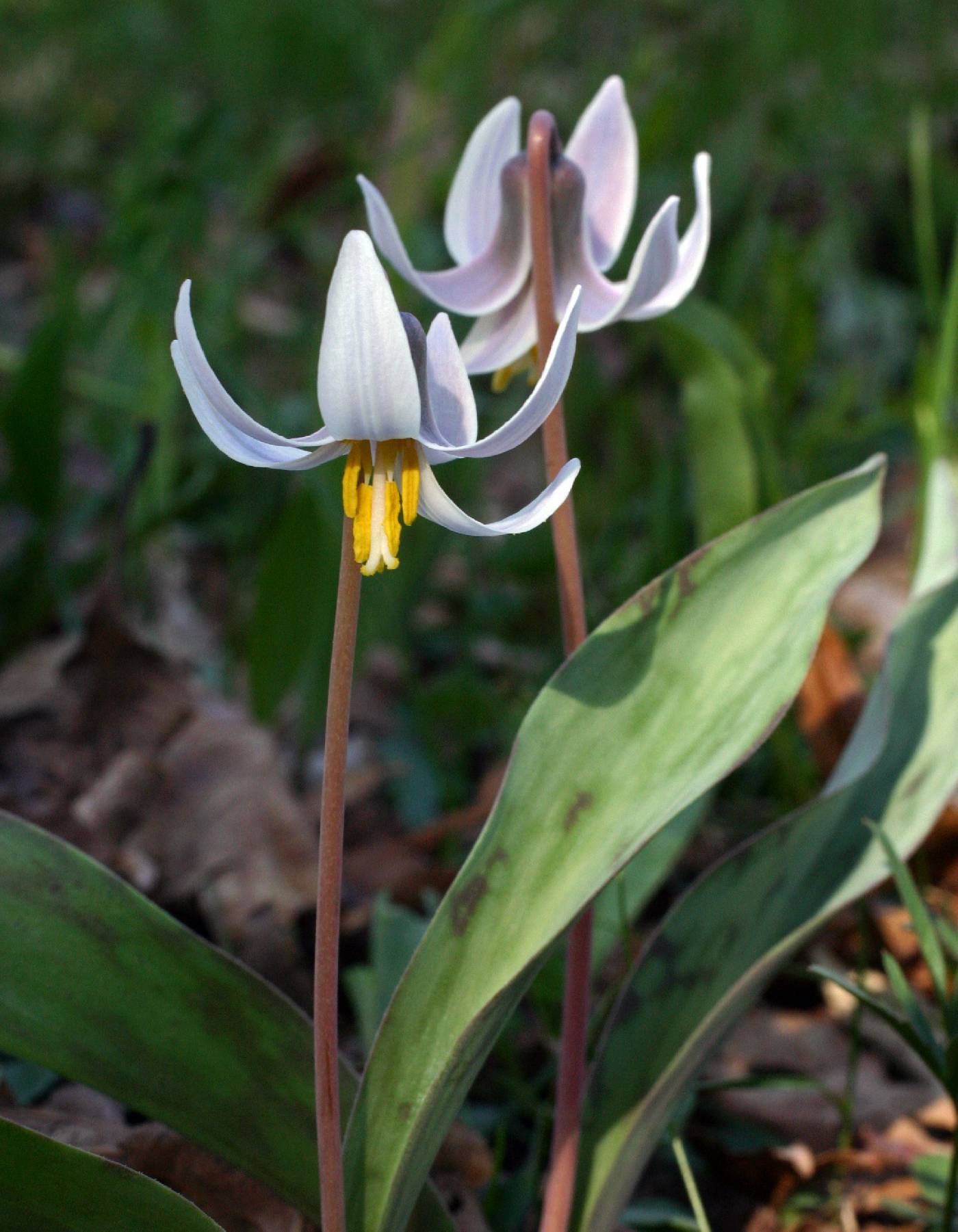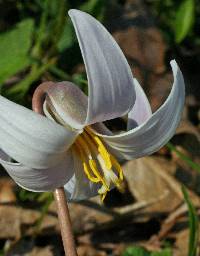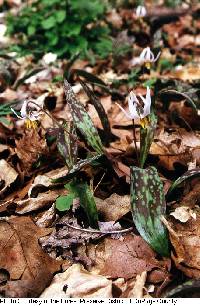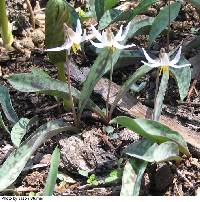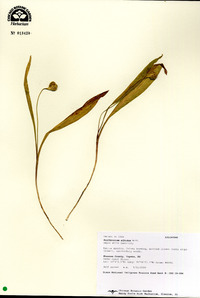|
|
|
|
Family: Liliaceae
white fawnlily
[Erythronium albidum var. coloratum Sterns] |
Bulbs ovoid, 15-30 mm; stolons 1-3, mostly on 1-leaved, nonflowering plants; flowering plants reproducing vegetatively by offshoots or droppers. Leaves 8-22 cm; blade green, irregularly mottled, elliptic-lanceolate to ovate-lanceolate or elliptic, ± flat, glaucous, margins entire. Scape 7-20 cm. Inflorescences 1-flowered. Flowers: tepals strongly reflexed at anthesis, white, tinged pink, blue, or lavender abaxially, with yellow adaxial spot at base, lanceolate, 22-40 mm, auricles absent; stamens 10-20 mm; filaments yellow, lanceolate; anthers yellow; pollen yellow; style white, 15-25 mm; stigma lobes recurving, 1.5 mm. Capsules held erect at maturity, obovoid, 10-22 mm, apex rounded to faintly apiculate or umbilicate. 2n = 44. Flowering spring. Mesic bottomlands, upland forests, woodlands, clay and silt bottomlands, floodplain forests; 0--300 m; Ont.; Ala., Ark., Ga., Ill., Ind., Iowa, Kans., Ky., La., Md., Mich., Minn., Miss., Mo., Nebr., N.J., N.Y., Ohio, Okla., Pa., S.Dak., Tenn., Tex., Va., W.Va., Wis. Erythronium albidum often forms extensive colonies in which nonflowering, 1-leaved plants far outnumber flowering, 2-leaved ones. It is very widespread in eastern North America, more common in the central states than E. americanum and often occurs in slightly drier sites.
Perennial herb with a bulb flowering stem 7 - 20 cm tall Leaves: one or two, born around middle of stem, appearing basal, 8 - 22 cm long, elliptic to egg-shaped to lance-shaped, flattened, irregularly mottled, with a waxy coating (glaucous). Flowers: white, sometimes tinged blue, lavender or pink, yellow inside at the base, 2.5 - 5 cm long, with six distinct, lance-shaped tepals that eventually spread and curve backwards. Stamens six, 1 - 2 cm long. Filaments and anthers yellow. Fruit: a 1 - 2 cm wide, oblong to egg-shaped capsule held upright at maturity. Similar species: Erythronium americanum is similar but has yellow flowers. Flowering: late March to mid-May Habitat and ecology: Common in woods, where it is extensively colonial. These colonies often contain many more one-leaved, non-flowering plants than the two-leaved flowering ones. Occurence in the Chicago region: native Etymology: Erythronium comes from the Greek word erythros, meaning red (certain European species have red flowers). Albidum means white or whitish. Author: The Morton Arboretum Extensively colonial; sterile corms numerous, producing a single lf and usually 1-3 stolon-like offshoots; fertile corms few, 2-lvd; lvs mottled in life, flat or nearly so; scape stout, 1-2 dm; tep 2.5-5 cm, strongly recurved-reflexed at anthesis, normally bluish-white, varying to light pink, often suffused with green or blue outside, yellow at base within, not auriculate; stigmas stout, separate, divergent from the linear-clavate style; fr ±erect, held off the ground, rounded to slightly apiculate or slightly depressed at the summit; 2n=44. Moist woods, especially on south slopes; s. Ont. to Minn., s. to Md., DC., Ga., Ky., Mo., and Okla. Mar.-May. Gleason, Henry A. & Cronquist, Arthur J. 1991. Manual of vascular plants of northeastern United States and adjacent Canada. lxxv + 910 pp. ©The New York Botanical Garden. All rights reserved. Used by permission. |


